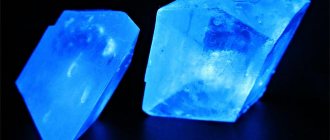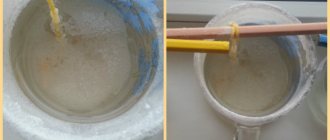- November 26, 2018
- garden plants
- Michael
Probably everyone has seen, and most have also tried, this tasty and healthy fruit. But not everyone can tell you how pomegranate grows - in the harsh climate of our country it is very difficult to grow it. However, if you have experience and enthusiasm, you can always try to experiment. After all, some lovers of exotic fruits manage to grow pomegranates and even harvest them in ordinary apartments, not to mention a full-fledged garden.
Appearance
Many people know that pomegranates grow on trees. However, a plant, even an adult, does not always look exactly like the tree familiar to most of our compatriots. Quite often it looks more like a large bush.
Most often the height is 2-2.5 meters. But in some cases, especially in wild pomegranate trees, the height can reach 3-4 meters or even more! And what flowers he has! A person who has seen in person how a pomegranate blooms and grows will certainly never forget this magnificent sight.
And yet, first of all, many are interested in the fruits, and not in external beauty and aesthetics. Pomegranates are quite large - in some varieties, with good care, their diameter can reach 15-17 centimeters, and their weight exceeds a kilogram.
The fruits are covered with a fairly hard skin, under which are hidden seeds with an appetizing juicy shell. Due to their resemblance to precious stones, the latter received the name garnet. The number of seeds in large fruits can exceed a thousand. True, their germination rate, especially if we talk about store-bought fruits, is relatively low.
Origin and historical homeland
Scientists claim that the pomegranate, about which the peoples of the East and West made up legends, was mentioned in the works of healers, was cultivated at least 4 thousand years ago. The ancient Romans and Greeks presented the fiery red fruit of the plant, which was called the Carthaginian apple, as a gift to the gods, revered as a symbol of fertility, the flower was personified with passionate love. Researchers suggest that the homeland of the pomegranate is Persia, but before our era, cultivated forms of the low, spreading tree were cultivated in Asia Minor and Central Asia, in Transcaucasia, from where the plant reached the Mediterranean.
Wild pomegranate is found in northern Africa, Afghanistan, the Middle East, and southern Europe. Sailors brought the fruits, inside of which many seeds are formed, to the New World, and the plant began to be cultivated in the subtropics of America, on numerous islands scattered across the Pacific Ocean and the Caribbean.
Beneficial features
It is not easy to talk about all the beneficial properties of pomegranate. If only because every part of the fruit - juice, seeds, partitions, bark - contains substances that strengthen human health.
Take at least juice. It boasts high levels of antioxidants - significantly higher than blueberries, green tea or citrus fruits. The amino acids contained in it strengthen the heart muscle. Tannins, which the juice is also rich in, prevent sore throat, gum disease, and stop diarrhea. Finally, it contains a large amount of iron. Therefore, when the level of hemoglobin in the blood is low, many doctors prescribe their patients to add pomegranates to their diet.
White membranes have a positive effect on the nervous system, reducing nervous tension. And if you sprinkle crushed peel on the burn, this will significantly reduce the pain.
How to clean
The average pomegranate contains approximately 1,300 grains. But anyone who has ever tried to separate this fruit knows how difficult it is not to damage them and not to splash themselves with bright red juice. However, there is an easy way to cut pomegranates. At the same time, it guarantees clean hands, clothes, kitchen and cutting board.
To do this, you will first need to cut off the “crown” of the fruit, and then make several cuts along the peel from the place of the “crown” along the fruit. And now the biggest trick: fill a pan with water and put the pomegranate in the water. Already under water, gently stretch the peel with your fingers so that the grains spill into the water. Then drain the liquid and blot the pomegranate seeds with a paper towel.
Possible harm
However, any useful product can also cause harm. Therefore, pomegranates should be consumed with caution by people who are allergic to citrus fruits. In most cases, there are no problems, but during the first tasting it is worth limiting yourself to a small amount of juice.
It is also worth remembering that partitions have a strengthening effect on the human intestines. So, consuming them in excess can cause constipation.
Finally, acidic juice can destroy tooth enamel. Because of this, doctors advise people who regularly drink this valuable drink to dilute it with water to reduce the acidity level. The result is a delicious drink that quenches thirst well. And it is advisable to use a straw.
Contraindications
The popularity and beneficial properties of pomegranate juice are known to everyone. But remember that it should be consumed in moderation. After all, regular consumption in large quantities can cause gradual destruction of tooth enamel.
It is advisable to exclude pomegranate juice from the diet for people suffering from gastrointestinal diseases (ulcers, gastritis). After all, it greatly increases acidity and can cause an exacerbation of the disease.
Where does pomegranate grow?
In general, the growing area of this plant is quite large. If we take Asia, then it is worth noting Uzbekistan, Armenia, Azerbaijan, as well as the countries of the Middle East. But it also grows in North Africa. For example, the ancient Romans believed that the best pomegranate fruits grow in Carthage, with which Rome repeatedly fought (remember the Punic Wars).
Of course, the tree also grows in many countries of Southern Europe - the mild climate allows this quite well. First of all, these are Italy and Greece - countries with warm winters and high humidity. It is not surprising that many tourists bring photos of a pomegranate tree from their tourist trips - not every compatriot has seen how it grows.
However, you can see it in our country. Primarily in the southern territories - from the North Caucasus to Crimea and Sochi.
Pomegranate: history of the name
Pomegranate – Punica is derived from the Latin word punicus, which means Punic or Carthaginian. It got its name from its place of growth (Carthage - modern Tunisia).
In Ancient Rome, pomegranate was usually called either Malum punicum - “Punic apple”, or Malum granatum - “grainy apple”. It was these two names that became derivatives in the formation of the modern name for pomegranate in different countries: Pomegranate (English), Granatapfel (German), Grenade (French), Granada (Spanish), melograno (Italian), Granatäpple (Swedish). ), granaatõun (Estonian).
The history of the name “pomegranate” in the Russian version is not much different from the above-described names of the miraculous fruit in other countries. Pomegranate - from the word “granatus”, translated from Latin as “grainy”.
Is it possible to grow it in the middle zone?
However, some domestic gardeners are seriously thinking about the possibility of growing such a valuable plant on their site. Moreover, they are not at all going to go to Crimea, Sochi, or, especially, Greece for this. They wonder how pomegranate grows at home and whether it is possible to grow it in the harsh climate of central Russia.
It turns out that this is quite possible! True, you will have to seriously think about insulation. As practice shows, many varieties easily tolerate frosts down to -8... -12 °C. True, if in winter the temperature drops below this level even for a short time, it is necessary to protect the plant from the cold. A relatively short summer can also be a problem - you should choose those varieties that are early ripening. Otherwise, you may simply not have time to get any kind of rich harvest.
Alas, our climate does not allow us to grow this plant as easily as pomegranates grow in nature. However, having collected the first fruits, any experienced gardener will agree that the feeling of satisfaction that he receives at this moment completely pays for all the time and effort.
APPLICATION
Necklace with garnet
Transparent, beautifully colored varieties of garnets are used in jewelry as semi-precious stones. At present they are of little importance.
Garnets with high hardness (almandine, pyrope, spessartine) are widely used as an abrasive material. For this purpose, garnets formed in the form of isolated relatively large crystals are more suitable than garnets from continuous granular masses. About 90% of garnets are used to make so-called garnet paper or cloth, which is used primarily for polishing hard wood (oak, walnut, maple, mahogany, etc.), grinding mirror glass, polishing leather, hard rubber, celluloid and other products.
To obtain abrasive materials, garnet-containing rocks undergo special enrichment. Rocks containing more than 10% of well-formed large crystals (more than 1 cm in diameter) are considered industrial.
Garnet – A3B2[SiO4]3, where A = Mg,Fe••, Mn••,Ca and B=Al,Fe•••, Mn•••
| origin of name | The name is given in connection with the similarity of some of them to the grains of pomegranate fruits (from the Latin granatus - “similar to grains”) |
Sprouting pomegranate from seeds
First of all, it’s worth understanding how pomegranate grows from a seed. Perhaps this is not the best option - when using a seedling, it is possible to reduce the waiting time before receiving the first harvest by three to four years. Alas, it is not always possible to find seedlings in regular stores. In addition, when grown from seed, you can get a stronger plant that is better acclimatized to the harsh climate of our country.
So what do you need to do to achieve this?
First of all, buy a beautiful, large fruit in the store. Please note - red fruits usually have a more sour taste, while yellowish ones can boast of sweetness. Unusual, but it's a fact.
The next step is to extract the seeds from the fruit. It is advisable to take them with a reserve, about 30-50 grains. And if you want to get not just one sprout, but several, you can have more. Alas, the germination rate of the seeds is not very high. Moreover, you need to take the grains with the shell, and not the bare seeds.
To begin with, they need to be placed in a warm, dry and dark place for about a week. During this time, the shell will become a little flabby. Now you need to put them in a paper envelope or wrap them in cloth and put them in the refrigerator (or better yet, in the freezer) for at least a week.
After this, you can safely plant the finished seeds in a pot with fertile soil (preferably light, maybe with a small admixture of sand) and good drainage - pomegranate does not like excess moisture. The planting depth is small - about 1 centimeter.
The pot is then covered with film on top to create a greenhouse effect. If the seeds turn out to be of high quality, then within a week or two the first shoots will appear on the surface.
Features of growing pomegranates
The subtropical crop is planted in open soil slightly north of its natural distribution area, however, to prevent the trees from freezing in the frost, the seedlings are placed at an angle of 45°, and they are rooted in this position. For the winter, the bushes are bent and covered. Although pomegranate does not need abundant watering, in hot and dry weather it experiences a lack of moisture, which can lead to cracking of the green fruits.
Types and varieties of homemade pomegranate that are grown indoors must be provided with heat and good lighting, and irrigation during the growing season. When the leaves fall, the trees are sent to a cool place for the winter.
Reproduction
Pomegranate is grown by choosing one of several methods, each of which does not cause any particular difficulties and has its advantages and nuances.
How to grow a tree from a pomegranate seed
The seeds of the berry sprout, but for planting, which begins at the end of February, a ripe or overripe fruit is selected, several seeds are pulled out of it, and after crushing the pulp, the hardest specimens are removed. Before planting, the seeds are washed, buried 10 mm into the soil, watered and insulated with film. If you maintain the temperature at 22°, moisten the substrate, add complex mixtures once every 2 weeks, leaves appear after 20–30 days, when at least 4 of them are formed, they are moved to a separate pot.
Selection of seedlings
When buying a pomegranate tree at a nursery, it is advised to carefully examine the roots, which should not have rotten areas or damage or signs of disease. Seedlings up to 30 cm tall and with 4 shoots take root better.
Conditions
In order for the tree to take root and begin to develop, it is sent in the spring to soil heated to at least 12°; in cold soil, the pomegranate will not grow and will disappear.
Landing, transplant
A hole for a tree or shrub form is dug 60 cm deep and the same width. Expanded clay or crushed stone is laid on the bottom in a 10 cm layer and a peg is driven in. The seedling is placed vertically in a hole, cleared of sticky substrate and the roots are straightened, which are covered with earth on top and sides. A hole with a diameter of 20 to 30 cm is made around the tree, a shaft is built along the edges of the soil and water is poured under the plant.
When placing several bushes between each bush, leave an interval of 1.8 to 2 m. Adult pomegranates try not to replant, but this has to be done when grown indoors, when the roots completely entwine the lump formed from the ground in the pot.
Season
The subtropical plant is planted in open ground when the air warms up to at least 12°C, which is observed in May or April, depending on the region. If there is a slight frost, the tree dies.
Site selection
Pomegranate does not have any special requirements for soil composition, but needs the maximum amount of sunlight. It is recommended to choose a place for planting a tree on a small hill, and not to allow it to be shaded by buildings or tall plants.
Soil preparation
The soil in the area selected for pomegranate is dug up a month before planting and freed from weeds. For each m2 of area, add 5 kg of organic matter in the form of humus. In order for the soil to warm up faster and the microflora to improve, the prepared area is covered with an opaque film.
Combination and proximity with other plants
Agronomists believe that pomegranate can be planted next to berry bushes and fruit trees, but the recommended interval between plants must be observed. If there is a forest plantation near the site, you will have to look for a place at least 10 m away from conifers and birches that absorb moisture and minerals.
Getting a harvest in the apartment
If you do not have the opportunity to grow pomegranate in the garden (due to lack of one or harsh climate), try doing it in an apartment. Want to know how to grow pomegranate at home? A photo of such an unusual pet is presented below.
To do this, you need to take a suitable pot - not too deep, but wide. Therefore, some people prefer to use a regular box. This choice is not accidental - the root system of pomegranate is quite powerful, but at the same time superficial, not buried.
In the spring, when the threat of night frosts has passed, you can take the pomegranate out onto the loggia or balcony. But you can also leave it at home - the main thing is that the side is sunny, because the plant needs an abundance of light and warmth. Don't forget to water it regularly - at least a couple of times a week.
In winter, watering can be significantly reduced, the main thing is not to allow the soil to dry out completely.
If everything goes well, then in 4-5 years you can get the first harvest. Yes, you won’t be able to get several buckets of kilogram fruits. But even a small amount of small fruits is quite a worthy reward for your efforts. After all, they are grown with their own hands! If you did everything correctly, you will soon be able to post photos on your own blog demonstrating how a pomegranate grows. Surely many readers will be interested in seeing this process in detail.
How to grow indoor pomegranate (video)
The flowers are bright red, larger in size than the foliage, so they look good against their background. They are elongated, cone-shaped and live only a few days. However, over the course of the season, new buds are constantly formed, thanks to which the pomegranate bush almost constantly decorates the room. Fruits are formed only in 4-5 flowers out of a hundred. Moreover, if the fruit has begun to form, then the flowers continue to appear on the bush, which creates a very beautiful, elegant look.
Currently, quite a few varieties of dwarf pomegranate have been developed. The most famous are the following:
- Nana (nana) grows up to 100-110 cm, has graceful, proportional forms;
- Baby is a very graceful plant that grows to a size of no more than half a meter;
- Ruby is slightly larger than baby ruby, its flowers have a classic bright red color;
- Uzbekistan is a real giant, as it can grow up to 2 meters in height. Produces fruits with a sweet and sour flavor.
We propagate by shoots
If you are interested in how a pomegranate tree grows and you want to have one on your property, then you can use not only sprouting a seed, but also a seedling or a small shoot. The latter can be brought from a trip to the resort or taken from friends who have already conducted such an experiment.
There will be no problems with the seedling. But the shoot needs to be properly prepared for planting. To begin with, it is advisable to wrap it in a slightly dampened cloth and put it in a dry and warm place, protected from sunlight. It is enough to leave it here for just half a day so that the cut area dries out. After this you need to lower it into the water. Some recommend diluting special root growth preparations in it in advance - they are sold in many stores. The shoot must be kept in water until the first roots appear. When their length reaches 3-5 centimeters, you can safely plant the plant in the ground. Of course, you should prepare for this accordingly.
Natural growth
The plant is self-pollinating and can grow in soils of any acidity, the optimal pH is 5.5-7. Requires watering every 7-10 days. Flower buds begin to bloom in early summer and bloom until September. The fruits are formed after the start of flowering and ripen within 180 days. The round pomegranate fruit can grow to a size of 12 cm in diameter, weighing up to 500 g. Inside the dense peel there are grains, divided into several parts by white partition films. The fruits may ripen on the tree or ripen after being picked. A pomegranate ripened on a tree cracks, but the grains do not fall out.
Important! One specimen can contain from 200 to 1500 grains, depending on the variety and time of collection.
Preparing for planting on the site
Experienced gardeners know that pomegranate is a rather fastidious crop. Therefore, the soil must meet certain requirements.
First, dig a hole in a suitable place (protected from drafts and well-lit). Its dimensions should be quite large - approximately 60 x 60 x 60 centimeters. If the soil on the site contains clay, that is, it is heavy, it would be useful to mix it with sand, adding from one-fourth to one-third of the volume. Conversely, if the soil is sandy, it makes sense to dilute it with good chernozem or even high-quality humus.
After this, you can plant the seedling or shoot. It is desirable that it is not perpendicular to the ground, but at an angle of about 45 degrees. Yes, it looks very unusual. But the wind, which causes a lot of trouble for gardeners in many regions of our country, will rattle the tall tree less. And it is much easier to protect a tilted tree from the cold in winter than an upright one.
When planting is completed, the soil needs to be watered generously and compacted a little so that there are no voids that could cause problems later. It would be a good idea to mulch the ground around - use dry manure, straw, sawdust or pine needles for this. This will reduce the number of weeds around, slow down the evaporation of moisture and ensure heat accumulation.
This completes the landing. But in order to get a harvest and preserve the young tree, it is necessary to provide it with appropriate care.
Growth conditions
Pomegranate grows and bears fruit in subtropical climates, on fertile soils, in conditions of high humidity. Signs of subtropics:
- average summer temperature is at least +20 degrees;
- average winter temperature from 0 to +4 degrees;
- sea air, making the climate humid and soft.
The average lifespan of a tree reaches 50-60 years. It begins to bear fruit three years after planting. The peak yield occurs in the 8-10th year of growth. As they age, they need to be replaced with young trees.
Important!
The harvest from one tree reaches 60 kg.
Plant care
First of all, you need to remember about regular watering. If it does not rain at least once a week, then it is necessary to compensate for the lack of moisture. But the main thing here is to be moderate - pomegranate does not like excess moisture. This may well lead to root rot. And this often causes weakening or even death of the plant.
Don’t forget to renew the mulch every season - the old one can be sent to the compost bin. Mulching, according to many experts, is a very important assistant when growing pomegranates. Its advantages have already been discussed above.
Don't forget about applying fertilizers. In June, it is advisable to use organic fertilizers - anything from green slurry to compost.
But in the middle or end of August you can use potassium and phosphorus fertilizers. Thanks to phosphorus, the root system is strengthened, which allows the plant to easily survive the frosty winter - of course, not without additional help from the owner. And potassium is needed for the abundant formation of buds. It’s worth talking about this in more detail.
Growing at home
Growing crops at home has a number of features:
- ensuring a long light period during the day;
- special watering regime. In winter - 1.2 times a month, in summer - 1 time every 7-10 days;
- after 3-5 years the tree needs to be replanted. It is better to do this in the spring;
- by trimming branches to form a crown for beauty and better growth. It is recommended to leave 4-6 branches. In summer it is worth removing young branches;
- in winter, it is better not to subject the tree to various manipulations, ensure the air temperature is +18 degrees.
We take care of flowers
Even an experienced gardener will be surprised by the fact that buds appear on pomegranates not in the spring, like with ordinary plants, but in the fall. It is very important to protect them from the cold - they can withstand up to 8 degrees of frost, but if the temperature drops below, the buds may well freeze. Of course, in this case there is no need to wait for next year’s harvest.
Therefore, you need to carefully take care of them - cover them with a suitable cloth, and you can also cover them with a thick layer of snow, which perfectly copes with the role of a heat insulator. All work must be done very carefully so as not to break the trunk and branches.
Usage
Pomegranate ranks first in iron content and increases blood hemoglobin. Therefore, it is recommended as a natural medicine for anemia, anemia, and chronic fatigue. Additionally, it is used as follows:
- Juices and vinegar are made from grains;
- culinary component of dishes for the preparation of sauces and desserts;
- peel containing calcium, potassium, magnesium, zinc, selenium, serves as raw material for the production of medicines;
- the dried peel is used in traditional medicine;
- cosmetic use of the juice will stop skin aging;
- flowers, partitions are brewed, infused, and used as medicinal decoctions.
Pomegranate is not only a tasty low-calorie fruit, but also a valuable product containing useful amino acids, vitamins, and minerals.
Maximum age of garnet
If everything goes well, the first fruits can be obtained within 5-6 years after planting the seeds. Well, when using seedlings or shoots - within a year or two. In this case, it is very important to use supports so that the plant does not break under its own weight.
Pomegranate lives for quite a long time, on average 50-70 years. But there are also long-livers. For example, in Azerbaijan there are many trees that are over 100 years old. And in France there are also bicentennial plants. Sometimes there are even reports of the discovery of real patriarchs whose age has exceeded three hundred years.
The oldest food?
The name pomegranate comes from a medieval Latin word that can be translated as “apple with seeds.” These fruits are mentioned in many ancient texts, including the Torah, Koran, Mesopotamian records and the books of Homer. Historical researchers suggest that the first pomegranate trees grew in the territory of modern Iran, then the plant spread across the lands that now belong to Iraq, Afghanistan, Pakistan, India, and Russia. It “emigrated” to the shores of the Mediterranean Sea and the Far East, and was found along the historical Great Silk Road. In those days, the pomegranate was considered a symbol of abundance and offspring.
Archaeologists have found charred remains of pomegranate fruits in settlements of the Early Bronze Age (which is almost 3000 BC). Grenades were found in Jericho, Cyprus, in the tomb of Tutankhamun. By the way, these fruits were regularly supplied to the pharaohs’ tables, and the plant itself was considered a symbol of life after death. Already in those days, pomegranate juice was used as a remedy for parasites, skin dye and for cosmetic purposes.
Images of pomegranates were also found on the pillars of Solomon's Temple in Jerusalem, on the ancient robes of Jewish clergy, and on the mosaics of Ancient Rome, where this plant was called the Phoenician apple. Ancient Roman women wore a sprig of pomegranate to indicate their marital status. In Zoroastrian temples, this fruit symbolized eternal life and fertility. In Persia it was considered a symbol of strength, and Buddhists considered it one of the three blessed fruits.
Pomegranates have occupied a leading place in many world religions. The Greeks spoke about him in their legends, he was revered by Jews, Muslims, and Hindus. In Christianity it is mentioned as a symbol of the Virgin Mary. This fruit was respected in medieval Europe (used in heraldry and various types of art) and during the Renaissance. He is loved all over the world even today.
Pomegranate - Royal fruit of health and beauty
The Russian name pomegranate comes from the Latin granatus (grainy). The history of the origin of the name of this fruit is in itself very interesting. In Ancient Rome, this fruit had two Latin names - malum punicum and malum granatum. The first literally meant “Punic apple”; the Romans called the Phoenicians who moved from Asia Minor to North Africa in the 12th-7th centuries BC Punics. and founded a number of colonies there: Carthage, Utica, Leptis Magna and others. At that time it was believed that the best pomegranates grew in Carthage.
The second name, literally meaning “grainy apple” - malum granatum, formed the basis for the names of this fruit in other languages: in German - Granatapfel (Apfel - apple), Italian - melograna (mela - apple), Swedish - Granatapple, Spanish - Granada, French - Grenade and English - pomegranate (from the Latin pomum - fruit). Since ancient times, in the East, pomegranate has been considered the king of all fruits. Probably due to precisely the original shape of the sepals, which forms the “crown”.
The pomegranate blooms very beautifully, abundantly and for a long time, strewing the tree with scarlet flowers, which after blooming look like crumpled silk shreds.
But pomegranate is not only one of the oldest fruits, it is also one of the healthiest. Almost everything is used for medicinal purposes: from the peel of the fruit to the branches of the pomegranate tree. Healing tea is brewed from the leaves; the fruits are tasty and nutritious. Dried pomegranate flowers are brewed as tea; its taste is not inferior to tea made from hibiscus (Sudanese rose) flowers. The bright juice of pomegranate seeds is rich in ascorbic and other fruit acids, sugars and tannins. Ripe pomegranate bark contains alkaloids that have a strong anthelmintic effect. Cosmetology did not ignore pomegranate. Pomegranate-based cosmetics contain active ingredients that intensively nourish the skin, giving it elasticity and softness.
The fruit is royal in appearance and taste. It is not for nothing that the pomegranate tree is called royal; its scarlet, exquisitely shaped flowers and glossy, leathery, dark green leaves are unusually beautiful. Not to mention the fruit itself, as if dressed in a mantle of discreet noble color, from cream with a raspberry blush to purple, and even crowned with a characteristic royal crown. It is quite possible that it was the pomegranate with its aureole on the top of the head that suggested to people the shape of the royal headdress. The taste of pomegranate, exquisitely sweet and sour, is not only refreshing, but also stimulates the appetite, helps better digestion of food, so drinking pomegranate juice before meals is very useful. But pomegranate is also good after eating, its calorie content is close to strawberries, grapefruit, cherries - approximately 30 - 40 kcal, so it will not add extra centimeters to the waist.
Precious core Each pomegranate fruit contains about a thousand bright ruby grains containing seeds and filled with tasty and healing juice. These grains look like a scattering of precious stones, and it is not for nothing that the transparent red stones almandines and pyropes, very similar in appearance to the grains from the “Phoenician apple”, received the name garnets. Pomegranate contains almost everything necessary for the full functioning of the body - 15 amino acids, 6 of which, in addition to pomegranate, are found only in meat and are indispensable for the human body, vitamins - groups B, PP, C, as well as provitamin A (carotene). The content of folic, pantothenic acids and pyridoxine (vitamin B6) in pomegranate juice is exceptionally high, and as is known, it is these chemicals that are actively involved in the processes of metabolism and protein synthesis in the body, and have a normalizing effect on the metabolism of fats and carbohydrates. Pomegranate fruits are one of the few desserts that are not only acceptable, but also healthy for diabetics.
What can you cook from pomegranate? Pomegranates are eaten fresh, made into jam, and served with ice cream. The grains serve as a dressing for various dishes. Often, seedless varieties of pomegranate are used for this: in fact, it has seeds, but they are very small and soft. And in Northern India, pomegranate seeds are dried and used as a spice to season vegetables and legumes.
Another important semi-finished product is pomegranate juice. Narsharab sauce is prepared from the juice of sour varieties - a seasoning for Caucasian dishes. In many countries, pomegranate juice is used for pickling: its enzymes make meat more tender, and its sour taste enhances meat dishes. Proteins marinated in pomegranate juice are preserved better than in a regular marinade.
Europeans make grenadine from pomegranate juice, a very sweet syrup. To make it yourself, you need to take one part pomegranate juice and two parts sugar. These ingredients should either be combined in a bottle and shaken thoroughly, or boiled and then boiled until reduced by half. In any case, the product is then placed in the refrigerator. Cold syrup is not as red as warm syrup, but sweeter than store-bought syrup.
Perhaps someone will need the recipe for the Pomegranate Bracelet salad
HOW TO MAKE POMEGRANATE BRACELET SALAD
Pomegranate is distinguished by its high content and variety of mineral composition - calcium, phosphorus, potassium, magnesium, iron, etc. Therefore, doctors recommend using it in medical nutrition for those suffering from hypertension, circulatory failure, and anemia. Pomegranate juice is very useful for anyone who works with radioactive isotopes or lives in an area of high radiation. Due to the presence of pectin substances, as well as tannins (tannins), pomegranate juice is useful for various inflammatory diseases of the digestive system. The juice has a strengthening effect for intestinal disorders. Pomegranate juice can improve a person's sexual performance, and helps prevent cancer; it is also useful in the fight against age-related changes in the body. Researchers from the University of Edinburgh (Scotland) are convinced that pomegranate juice reduces the level of free fatty acids (FFA) in the blood, which often cause the deposition of excess belly fat in women and men. Scientists conducted an experiment on 24 men and women who drank 500 ml of pomegranate juice daily for a month. The results of the study are very encouraging; after a course of juice therapy, half of the volunteers partially got rid of the tendency to gain fat in the waist area and became noticeably slimmer. In addition, almost all subjects had a significant decrease in blood pressure, which reduced the risk of heart attacks, stroke, and kidney disease.
Properties of pomegranate Thanks to the tannins contained in pomegranate, the miracle fruit has a disinfectant effect. But most of these substances are not in the pomegranate pulp, but in the bark of the pomegranate tree. It can be used for infectious diseases as a herbal antiseptic. Research has proven that pomegranate bark is a powerful weapon against intestinal, dysentery, and tuberculosis bacilli.
Pomegranate juice is used as a refresher, as well as a means to improve appetite and normalize the functioning of the gastrointestinal tract. Pomegranate juice and a decoction of its peel will even help get rid of intestinal dysbiosis. Regular consumption of pomegranates is believed to reduce the risk of breast cancer in women. It is also very useful for various heart diseases. Fresh fruits are effective for coughs, colds and malaria; they are prescribed as a general tonic for exhaustion, anemia and atherosclerosis.
Freshly squeezed pomegranate juices have not only restorative, but also cleansing properties. Pomegranate juice is no exception. After all, this juice contains more antioxidants than green tea. It increases hemoglobin levels, appetite and regulates stomach activity. Serves as an antiseptic, diuretic, anti-inflammatory, and even an anesthetic, and also increases the human body’s resistance to radiation. Even pregnant women are recommended to drink it, especially in combination with carrot and beet juice. Pomegranate juice is also indicated for anemia and exhaustion of the body caused by a long illness. The juice of sweet varieties of fruit is prescribed after infectious diseases and operations, as well as for stomach pain.
A pomegranate is just some kind of hanging pharmacy, but it must be used with caution; for all the positive qualities of this fruit, there are also disadvantages. Disadvantages of pomegranate In any case, it is recommended to drink pomegranate juice diluted with water, since the acidic juice eats away thinned tooth enamel. And if there are problems with your teeth, but you are unable to refuse, then use toothpaste for sensitive teeth before eating or chew a piece of cheese, which will cover the enamel with a kind of protective film through which acid and plant pigments will not penetrate. For gastritis with high acidity, this fruit is absolutely contraindicated. It contains a lot of citric acid, and also contains others - malic, tartaric, succinic, boric, oxalic. Contraindication: stomach ulcer. In addition, pomegranate is harmful for people with chronic constipation and hemorrhoids, as it has a strengthening effect.
Pomegranate and vision But pomegranate has a very good effect on vision. If you develop night blindness (bad vision at dusk), drink a glass of pomegranate juice daily. The anthocyanins it contains promote the synthesis of the light-sensitive pigment rhodopsin, which significantly improves the eyes' adaptation to darkness. These pigments activate metabolism in the tissues of the eye, improve their nutrition and suppress the unhealthy activity of aldose reductase, an enzyme that causes clouding of the lens. That is, pomegranate juice lovers are not afraid of cataracts. What other problems can be solved with the help of the miracle fruit pomegranate?
Treatment with pomegranate General slagging of the body To cleanse the blood of metabolic end products and toxins, drink freshly squeezed pomegranate juice 2-3 times a year for 3 weeks. In the first week - half a glass 3 times a day, in the second - 2 times, and in the 3rd week - once a day in between meals.
Tendency to edema, stagnation of bile Take 1/3 cup of pomegranate juice as a diuretic and choleretic agent.
Poor appetite Drink 0.5-1 glass of pomegranate juice or eat part of a pomegranate 15 minutes before meals.
The rejuvenating “apple” of ancient peoples in modern cosmetics Pomegranate has been widely used both in medicine and in cosmetology since ancient times. The healing properties of ruby seeds have been sung since the times of ancient Indian manuscripts and Greek scriptures. Pomegranate rubs and baths to destroy age spots, freckles, acne, whiten facial skin, and hair growth were actively used in cosmetology in ancient times and are still used today. Pomegranate juice is perfect for skin care of any type. It can be used as lotions and masks. For example: * Whitening mask “Pomegranate with sour cream” Mix 1 tsp. pomegranate juice with 1 tsp. sour cream. Apply the mixture to your face for 10-15 minutes, then rinse with warm water.
Not only is pomegranate juice used in modern cosmetics, a wonderful oil is extracted from pomegranate seeds, which has a powerful anti-aging effect. Of course, extracting oil from seeds is not so easy, but it is quite possible for large companies.
POMEGRANATE OIL
What are the benefits of pomegranate oil? Pomegranate, of course, is not an oilseed plant. From 500 kg of fruits, only a kilogram of oil is obtained by cold pressing; it is sold in small bottles and used for cosmetic and medicinal purposes. It concentrates all the beneficial properties of pomegranate. It is rich in antioxidants and vitamin E, and also has a unique set of polyunsaturated fatty acids, based on specific pomegranate acid, combined with tocopherol and sterols. Pomegranate oil lowers blood sugar levels, stimulates collagen production and skin regeneration, helps weight loss, and prevents the development of diabetes. It reduces muscle pain and swelling, has a soothing and anti-inflammatory effect: it is used for eczema and psoriasis and in after-sun products. - Moisturizing. Pomegranate seed oil has excellent moisturizing properties that help retain moisture in the skin cells. This prevents the appearance of wrinkles and maintains a stable pH balance in the epidermis, which is especially important for dry facial skin types. - Rejuvenation. As everyone ages, wrinkles inevitably appear, and although this process cannot be completely stopped, pomegranate oil can slow it down a little. This occurs due to the activation of the growth of keratocins (the main component of the epidermis), which promotes cell regeneration. - Maintains elasticity and firmness. Oil extract of fruit grains helps the skin stay young and healthy. It harmoniously combines fatty acids important for cell structure, which help maintain elasticity and blood circulation in tissues. — Thanks to research, it has been revealed that pomegranate seed oil plays an important role in the synthesis of collagen, the main protein of fibrous connective tissue. That is why the use of this product can maintain youthful and elastic skin for a long time. — Has antimicrobial and anti-inflammatory properties. Use is indicated for skin irritation and diseases such as eczema, psoriasis and acne. According to recent research, pomegranate oil is a good remedy for preventing melanoma, as it has the ability to fight affected cells.
— Protection from sun rays. In addition to the above benefits, pomegranate oil extract is also known for its ability to protect cells from ultraviolet radiation. This is especially important during periods of solar activity. Thanks to these properties, the oil is widely used in cosmetology, as one of the main components in moisturizing and nourishing creams and facial care lotions. It is especially effective for rejuvenating dry, irritated and aging skin. It is used not only externally. The extract also contains phytoestrogens, which have proven effective in combating menopausal symptoms. The use of pomegranate seed oil is very effective in preventing premature aging of the facial skin. The fruit extract has long been used in anti-aging cosmetic products. It has many properties that help preserve youth and beauty.
You can purchase this wonderful pomegranate oil in my store.
Historically, there has been a good attitude towards the pomegranate fruit. Images of pomegranate were found on Egyptian pyramids, on ancient Byzantine fabrics, and in the ornaments of the ancient Greeks and Arabs. The pharaohs greatly appreciated fresh pomegranate juice, considering it miraculous, capable of strengthening not only the body, but also the spirit. Perhaps because in Greece the pomegranate was considered a symbol of marital fidelity, and in the Middle East it was called the “king of all fruits.” In addition, pomegranate has always been considered a symbol of fertility and abundance. Perhaps we should also fall in love with this fruit and “accept” it more often in our homes for health and prosperity.











